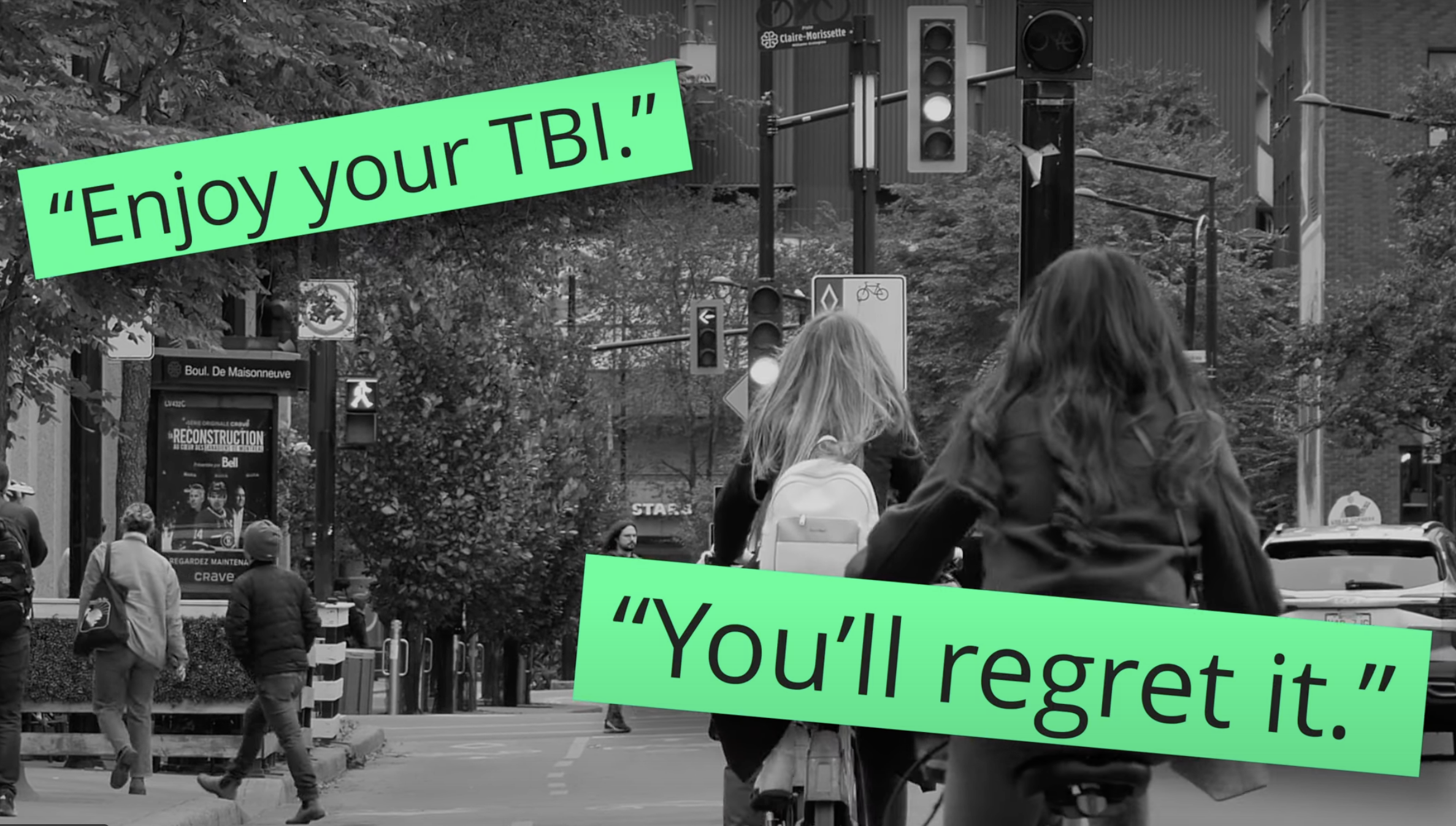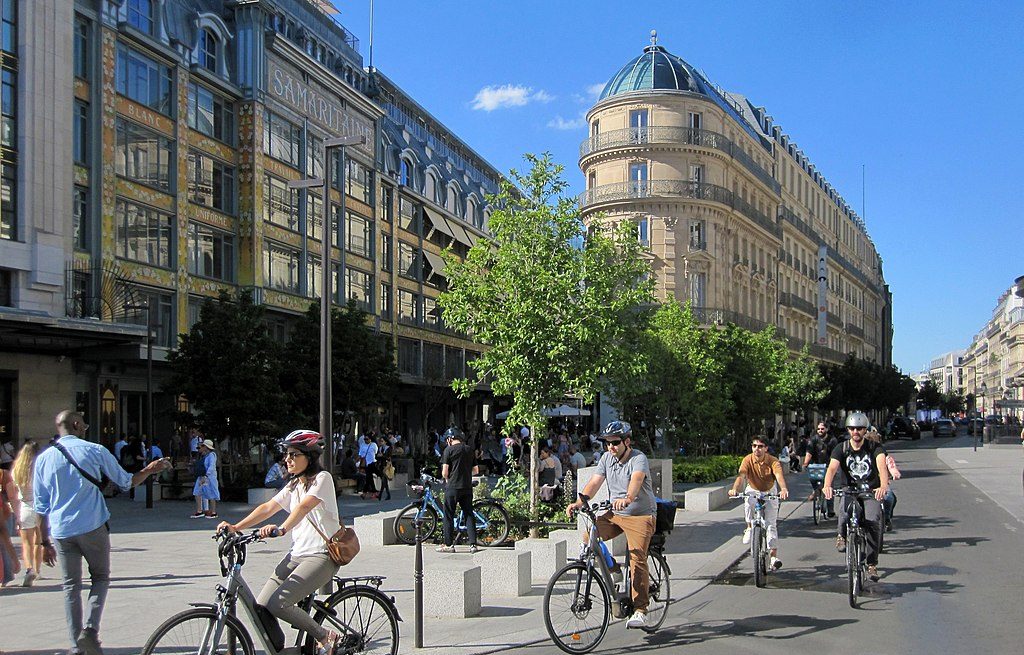For years, transit advocates in New York and other U.S. cities with legacy rail systems have advocated for modernizing commuter rail to run more like a subway, often using Paris as an example. For good reason: Data suggests Parisian regional rail lines are well-used throughout the day, meaning the system helps people forgo driving for all types of trips, not just the trip to work.
Starting in the 1970s, Paris connected its suburban rail lines to form the RER network. Instead of ending in stubs in the central city, the RER runs as an express subway through the city proper. Using time-of-day trip data*, we can compare the RER to its American counterparts.
While the largest share of boardings in the Paris suburbs is in the morning peak, there is also substantial ridership in the afternoon and evening. In contrast, commuter rail in the U.S. is tilted much more heavily to peak hour ridership.
In Paris, I attempted to exclude all stations that do not serve originating commuters: the airport, the city center stations, stations dominated by transfers, and the big suburban job centers. Across the remaining stations, representing the region's bedroom communities, 46 percent of weekday boardings are in the peak hours between 6 and 10 a.m.
On the LIRR, the corresponding figure, excluding city center stations, is 67 percent. On Metro-North, excluding job centers White Plains and Stamford, it is 69 percent (including them, it is 63 percent). On the MBTA, it is 81 percent.
U.S. commuter railroads are often full to seated capacity during peak hours but only carry a few people per car at other times. An entire off-peak MBTA train might have, at its fullest, 60 passengers. This is not the case in Paris, where midday RER trains routinely leave the city with every seat full.
There are two main reasons for this: service frequency and land use. This article focuses on frequency, with land use covered in a follow-up post.
Commuter rail service in the U.S. is simply not frequent enough throughout the day. Outside of rush hour, it's common for trains to run once per hour in New York and Boston. Some MBTA lines have midday service gaps of two hours or longer. On LIRR branch lines, stations only get hourly service. Even on some LIRR and Metro-North trunk routes, service runs every 30 minutes.
This service pattern is not frequent or reliable enough for people to orient their lives around the trains, so instead, anyone who can afford a car in the suburbs served by these trains gets one, and drives it to all destinations except the urban core. To American regional rail operators to think less in terms of peak-hour commuters and more in terms of good overall service, especially for people who do not own cars (even if they travel to the rail station from another community).
Parisian commuter trains are oriented toward all-day ridership. The RER network is one of the most important models worldwide for running commuter rail like a subway, complete with an urban service pattern not too different from that of New York's express subway lines. On the busiest RER trunk lines, the RER A and B, off-peak trains still come every four and five minutes, respectively.
Even RER branch lines, and some suburban rail branches not connected to the RER, have high off-peak frequency. Typical off-peak trains on these lines come every 15 minutes, rising to 10 minutes on two out of three RER A branches. A few come every 20 minutes, and fewer still come every 30. The trains are usually either on time or only two to three minutes late. (Only distant exurbs have hourly service, and there, ridership is indeed concentrated in peak hours.)
Moreover, off-peak schedules are predictable -- trains always come the same number of minutes after the hour (known as clockface scheduling). For example, at Bures-sur-Yvette, a southern Paris suburb, inbound RER B trains leave at :03, :18, :33, and :48 after the hour between 10:33 and 3:48 every weekday. It's easy for people to memorize the schedule, and if they live within walking distance of this or any other RER station, they can time their arrival at the platform to coincide with the train. In the U.S., Metro-North and some LIRR lines have off-peak clockface schedules (every hour, rarely every half hour), but on the MBTA only the Lowell Line does.
There's growing emphasis on frequency among transit advocates in the U.S. This is because even rush hour ridership benefits from higher off-peak frequency: Office workers are more likely to ride the train when the trains will still be frequent at 7 or 8 p.m. if work runs late.
But off-peak frequency is the most useful for off-peak ridership, of course. This is why it is so significant that Paris gets especially high off-peak ridership. It suggests that if frequency on U.S. commuter rail improves, more people will choose to orient their lives around the better transit service. Some will choose not to own a car, while others will still own one but use it less than they do today.
Commuter rail operators may think that adding frequency would just result in running more empty trains, but the fact that off-peak RER trains are full suggests otherwise. If transit agencies choose to add more service, off-peak ridership is likely to rise disproportionately to the increase in frequency.
*A note of caution on the data: the Parisian numbers do not cover the entire commuter rail network. Paris has two different operators: RATP, which runs the Metro, most of RER A, and half of RER B; and SNCF, which runs the RER lines that RATP does not, as well as the more traditional Transilien lines. Only SNCF makes time-of-day data available to the public, based on one-day counts; RATP only has annual numbers. In the U.S., three big commuter railroads provide time-of-day data: the LIRR and Metro-North in New York, and the MBTA Commuter Rail in Boston. Of those, Metro-North and the MBTA only provide data on inbound boardings, though the MBTA also says it has very few outbound boardings in the suburbs.





